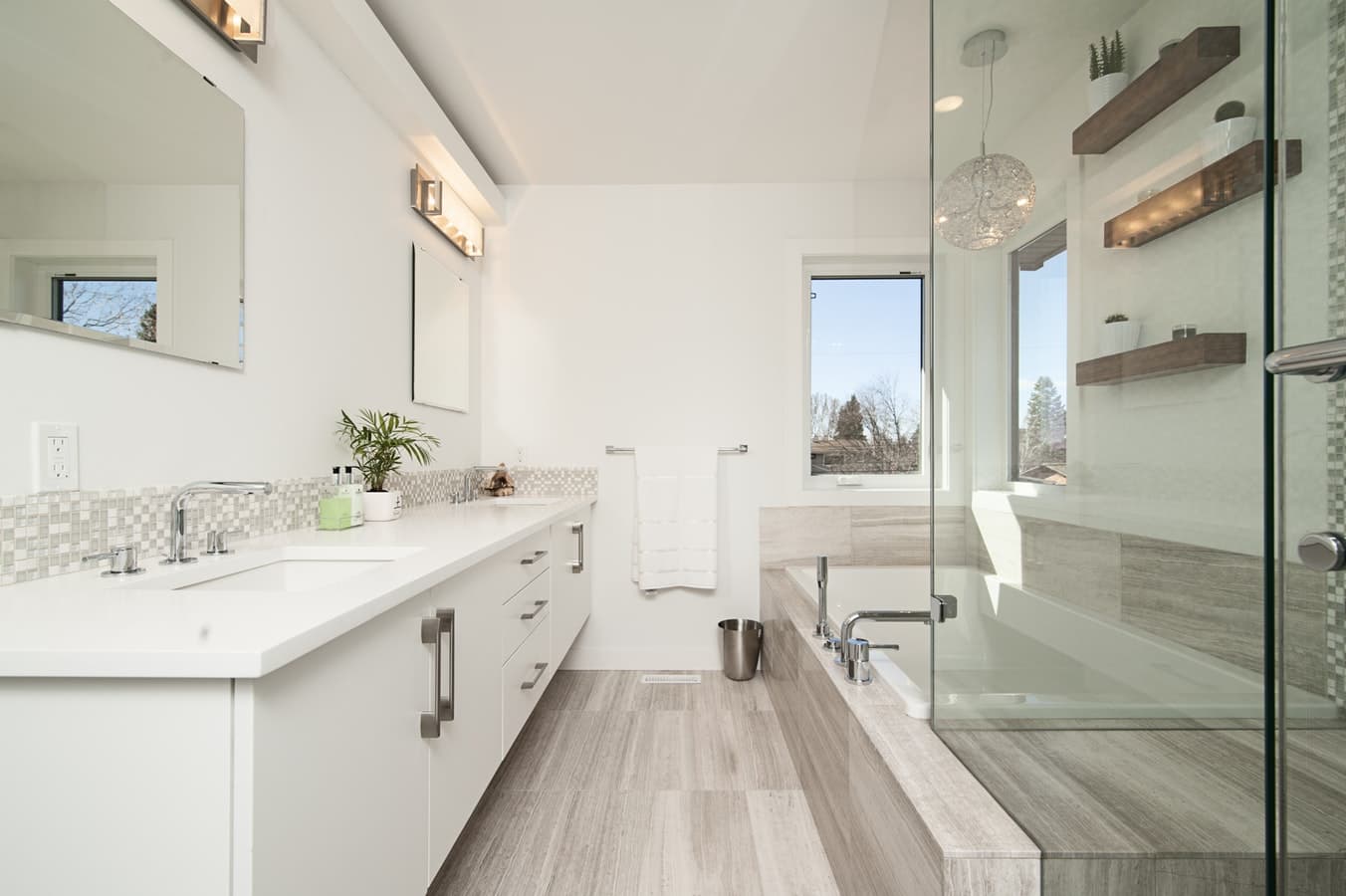Are you looking for a contractor?
Submit our quick form and get quotes now!

Do you live in a rural area or have a summer home that isn't connected to a local water system? If so, you probably have a functioning septic system. How can you make sure your conventional on-site disposal system is working properly? What are the best practices to uphold to extend the service life of your sanitary installation and prevent damages? The key to a system's longevity is understanding its inner workings, whether your property is equipped with a conventional or non-conventional system.
What Are the Basics of Preventative Septic System Maintenance?

Source: Flickr
Having a septic tank requires one to be a little more diligent about water use and waste disposal. Septic systems are more prone to damage compared to city sewer systems. Many substances can't be broken down by the enzymes and bacteria in your tank; said substances can eliminate the bacteria needed to treat the wastewater and clog your system. So, here are some tips to follow:
Reduce your water consumption by installing, for example, low-flow faucets, showerheads, and toilets. Also, fix all leaks.
Use single-ply toilet paper, tissues, and paper towels; some are septic system-friendly.
Avoid overloading your septic tank: Don’t dispose of grease, food scraps, or harmful chemicals through your pipes.
Avoid using your kitchen sink’s garbage disposal.
Don’t dispose of the following items/products through a channel leading to your septic tank: fabrics, bleach, paint, aerosols, glues, solvents (in other words, flammable materials), cigarette butts, medications, cosmetics, drain cleaners, antibacterial soaps, and feminine hygiene products.
Hire septic system maintenance experts; said professionals have the right equipment and insurance policies and provide situation-specific advice on top of expert inspection services.
What Are the Best Steps for Maintaining a Residential Septic Tank?

Source: Flickr
First, make sure your system is accessible to both you and the septic truck.
Then, consider the state of the access riser covers and insulation material, replacing any missing or damaged bolts.
Next, with a sludge judge, measure the scum layer. If it surpasses the tank’s halfway point, it’s time to drain and clean it.
To do so, pump out the water, and store it in a section of the truck, allowing for sludge and grease extraction.
The pipes, filters, and tanks should be cleaned. The smell emanating from the septic tank may take a while to dissipate; it usually depends on what’s found inside the tank. Thoroughly clean the pre-filter to avoid unpleasant odours.
The follow-up inspection is meant to detect any cracks or other damages/anomalies found in the system as a whole.
If everything is as it should be, the technical team will restore all the components, pump the water back in, and ensure the tank is functioning properly.
How to Keep a Septic Tank Healthy the Natural Way

Source: Depositphotos
Biological additives (bacteria and enzymes) are retailed to improve the state of septic tanks and disposal fields or to treat issues related to sludge and biomass build-ups.
However, several studies have shown that adding bacteria or enzymes doesn’t actually have any measurable beneficial effects on the overall performance of a well-maintained septic system. If anything, adding extra microorganisms could potentially clash with the naturally occurring bacteria, competing for organic matter and oxygen to maintain the bacteria. Ultimately, the use of these additives will actually reduce the system’s efficiency. Generally speaking, following the above-mentioned tips suffices for keeping your system performing optimally.
On the other hand, said products may be beneficial should your septic tank’s plant life somehow be destabilized due to unwanted substances, such as antibacterial soaps, pesticides, pharmaceuticals, and so on. With the latter, it might be worth giving nature a helping hand.
In an interview with Greg Scarrot, an expert with Bio-Sol, several things were confirmed:
The difference between bacteria and enzymes resides in their respective functions: Enzymes will break down organic matter for bacteria to consume easily.
A 454 g-bag of bacteria retails for about $18 before taxes.
Before buying anything, check with the manufacturers or with your septic system maintenance experts; enzymes and bacteria have several specific categories and don't necessarily break down the same waste materials (urine, starch, blood, vegetables, other leftover food items, etc.).
How Much Does It Cost to Maintain or Repair a Home Septic Tank?
The cost of maintaining a septic system varies based on several factors, including:
Type and age of system
Area of residence
Property accessibility
Hired service provider
But, to help you gauge the costs involved, septic tank maintenance and pumping typically cost between $150–$700.
FAQ About Septic Tank Cleaning & Pumping
What is the average service life of a septic tank?
On average, septic tanks have a 15–25-year lifespan. To ensure your septic tank functions properly throughout its service life, make sure its upkeep isn’t neglected. A poorly maintained septic tank can clog, collapse, contaminate soils, or be the root cause of other, more serious, problems.
Is septic tank pumping mandatory? How often should I pump out/drain a septic tank in Ontario?
Yes, pumping your septic tank every couple of years is mandatory in Ontario, and everywhere else in Canada.
To keep mishaps at bay, the frequency at which your septic system should be pumped is every two years, especially if your property is connected to a conventional disposal system. If, for example, your summer house is connected to a septic tank, a property where there’s less wastewater build-up, plan on pumping it every four years.
The purpose of said obligation is to prevent overflow, foul smells, and water table contamination. Neglecting to adhere to such a regulation can lead to fines.
What are the signs that your septic tank is full?
To know whether your septic system should be pumped, you can monitor several telltale signs indicating the sludge and solid substance levels are nearing the point of intervention. Here are the main factors to monitor:
Foul smells around the septic tank or house
Slow drainage: Water drains slowly from sinks, toilets, and showers
Stagnant or excess water or damp areas around the drain field
When in doubt, it’s best to contact a professional sewage system maintenance and repair provider to inspect the state of your system to determine if it needs to be pumped or not.
What is the average capacity of a septic system?
As a property owner, understanding the capacity of the tank installed on your property is of utmost importance. Note that the capacity of the tank found on your property depends on the size of your home. If you have a three-bedroom home, the capacity of the tank should be, at least, 734 imperial gallons. Note that, on average, occupants produce 75 imperial gallons of wastewater per day. Hence, the more people, or bedrooms, in a home, the bigger the tank.
Moreover, if you're planning renovations or remodelling your home, you may need to install a new septic tank to ensure all liquid waste is properly disposed of instead of carrying out frequent pumpings, which can be quite costly.
Looking for something else?
Table of contents
4 min read
Get 3 free quotes for your project!
Submit a project and get 3 free quotes!
Are you a contractor?
Join our network and receive real leads!
Download the price guide for renovations
We’ll be emailing you the latest market price guide for renovations.
Related articles
The latest industry news, interviews, technologies, and resources.

Editorial Team
•05 Dec 2023
A pergola is a great alternative to a traditional patio umbrella. Not only does this sunshade provide a more aesthetic appeal compared to the latter, but it also offers a wide range of options in terms of materials and sizes. On top of that, it doubles as a permanent patio lounge area, while still shielding you from the elements. Despite being exposed to Canada's harsh East Coast climate and other elements, preserving its condition for many years to come requires meticulous care and maintenance.

Editorial Team
•04 Oct 2024
There are several types of roof windows. To choose the ideal one for you, avoid limiting yourself to aesthetics. The energy savings you achieve—or not—hinges on their size, positioning, and installation.

Editorial Team
•07 Nov 2023
Picking a material for the bathroom floor can be a unique choice in comparison with other flooring materials around your home. Once you have determined the main aspects of selecting a floor, including the look, feel, durability and cost, you must consider the most important factor: a material that can deal with an excess of humidity and water.

Editorial Team
•07 May 2024
A health and safety representative’s (HSR) role is paramount for preventing occupational accidents and protecting workers' health in the workplace. It’s a vital role, further reinforced by the Act to modernize the occupational health and safety regime. An HSR will actively participate in workplace risk prevention management, while also working collaboratively with the health and safety committee (HSC) and the employer. Learn about the role and responsibility of an occupational health and safety officer.

Amanda Harvey
•07 Nov 2023
When you think about your bathroom, you may not consider it a space with futuristic potential. The possibilities of our world have expanded as a result of technology, and of course, your home is the next logical step when it comes to enhancing your lifestyle.